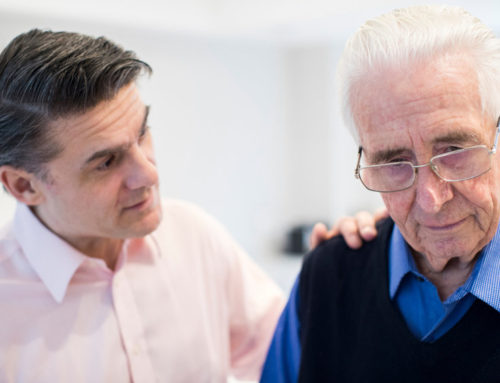Share This Story!
Dealing With The Final Prognosis
When a loved one is coming to the end of life due to a terminal disease or old age the time is very distressing. How can the transition be as safe and comfortable as possible? Most families do not have the tools or expertise to fully care for the ailing family member. The doctor can then recommend hospice or palliative care. Understanding the difference can help both patients and families navigate this difficult time.
What is hospice care?
With over 1.5 million patients, a hospice takes care of an adult patient at the end of a terminal diagnosis. This could be due to diseases like cancer, dementia, or terminal conditions brought on by old age. The medical team has done everything possible to save the patient, but the prognosis is clear. The patient will likely have 6 months or less to live. The hospice is a place for the patient to receive compassionate care until the end of life. These caregivers manage symptoms, pain and make life as comfortable as possible. In most cases, hospice care also considers the mental and spiritual needs of the patient.
Why hospices are so important
For a family to choose hospice care, there is high respect, care, and love for the patient. The end of life is near but still valued. The patient has a safe space to manage pain while still interacting with family members. That safe space is often at home, where hospice personnel visit daily and manage the patient. However, in many cases, the patient goes to a facility if specific machinery or expertise is required. Hospice care is also crucial as families can choose together after the final prognosis if this is the best option. Having that control over the last part of life can make things easier for all involved.
Adding palliative care
A concern with hospice care is that families wait too long to provide support. Patients often appreciate additional care and support even before a final prognosis. Palliative care is a team of professionals who provide medical support at any time during the terminal illness journey. This includes pain management, counseling, spiritual support, and other practical needs. Palliative care usually happens alongside the treatment for the medical illness or any attempt to cure the disease. In other words, the best palliative care starts as soon as the patient is diagnosed.
Hospice vs. palliative care
Both seem similar in approach but are different in several ways. Hospice and palliative care are philosophies that mix in everything a person needs to manage a terminal illness. The goal is not to cure the disease but to manage the side effects, emotional strain, and general discomfort. Palliative care does this at any stage of the disease and includes social and spiritual support. The service can easily transition to hospice care if treatments no longer respond or the disease has run course.
Helping your loved ones the right way
The best way family members can help loved ones is to take action early. Hospice care has the reputation of being seen as the end of the road. As a result, families avoid this difficult decision or wait until the patient has a few weeks to live. The patient and loved ones should discuss palliative care around the initial diagnosis. Palliative care may improve the patient’s spirits while being clear on the possibility of death. When the final word comes from the doctor, transitioning to hospice care is easier.





